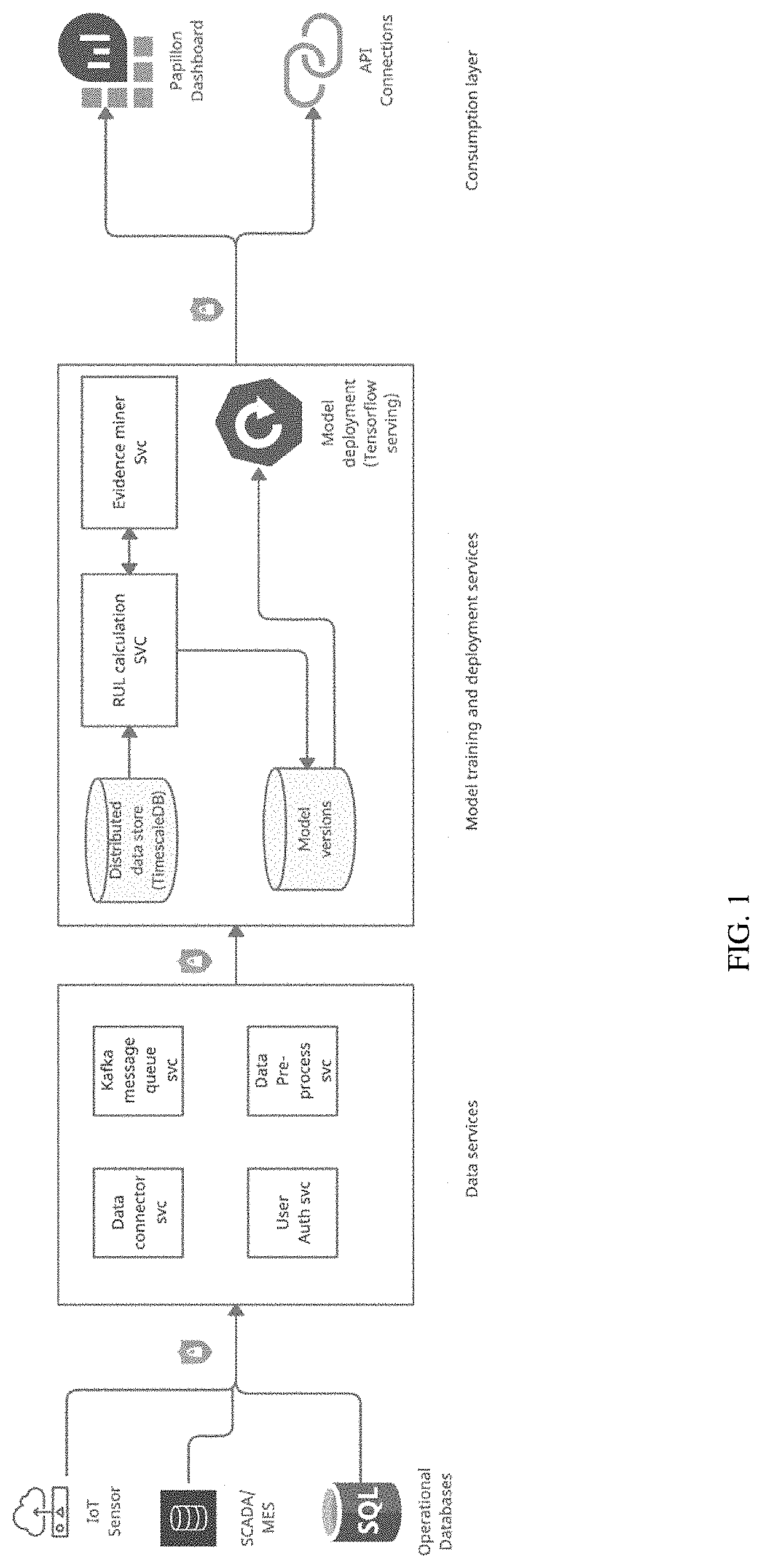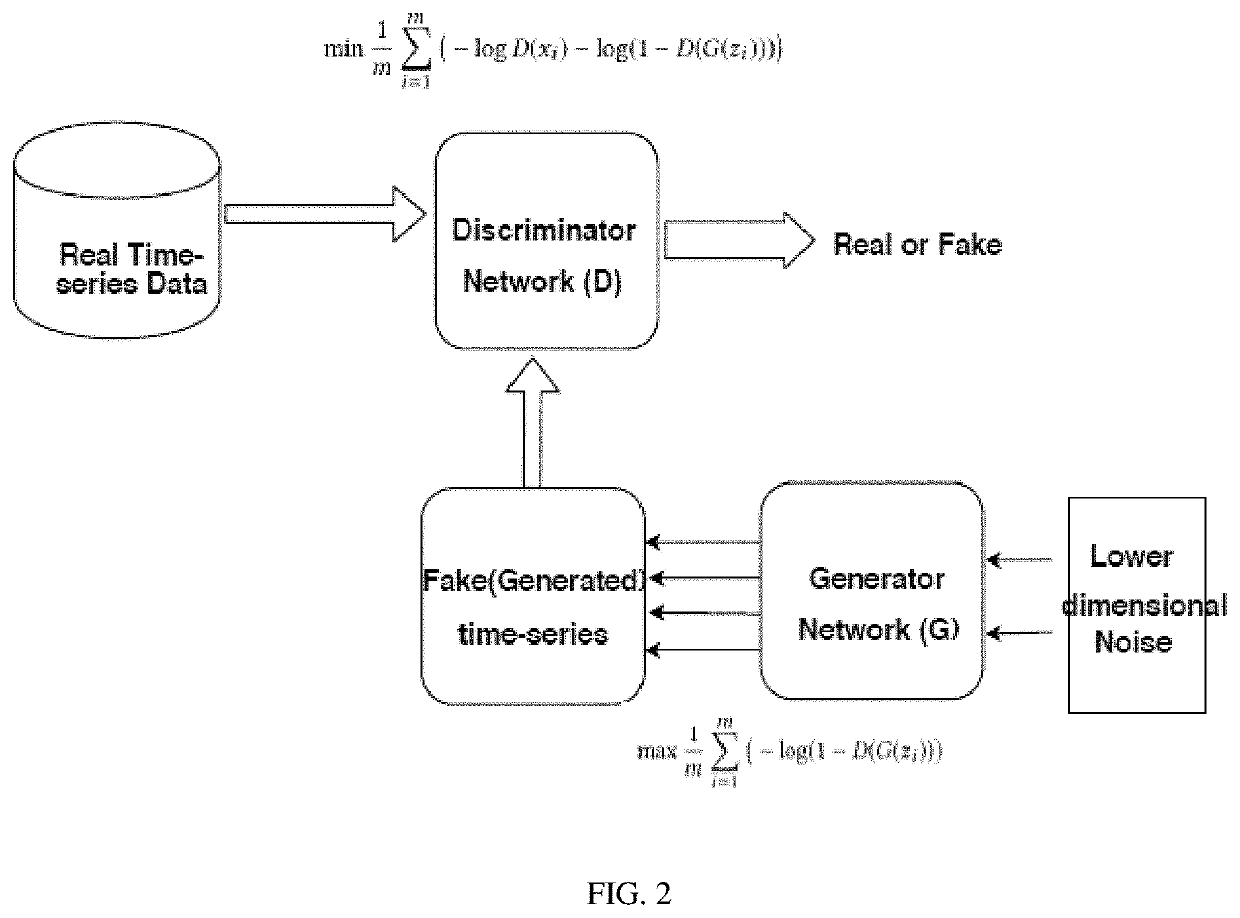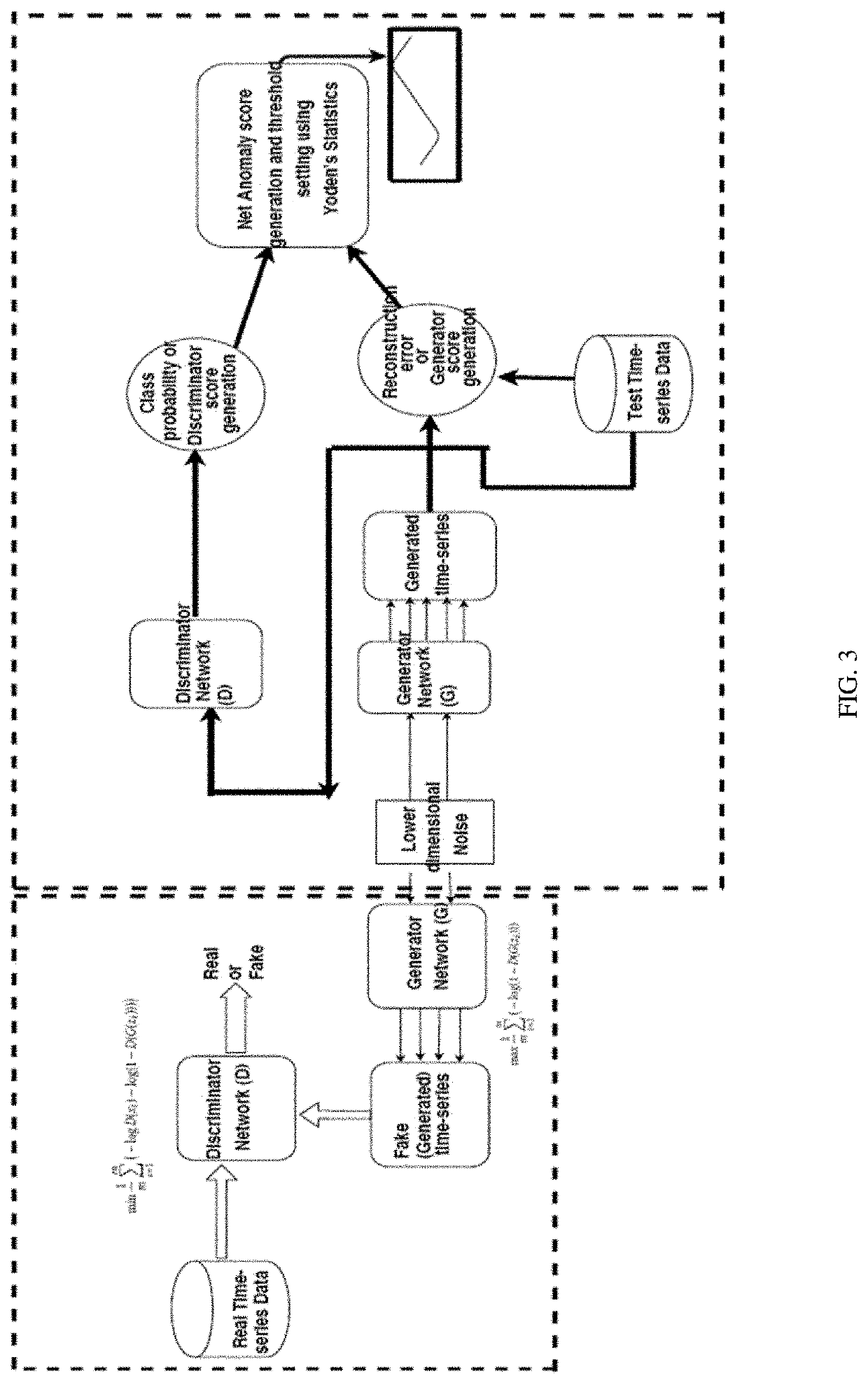System and method for unsupervised anomaly prediction
a technology of anomaly prediction and system, applied in the field of systems and methods, can solve problems such as catastrophic impact on lives and livelihoods, affecting the bottom line of process and manufacturing industries, and disrupting operational continuity, and achieve the effect of improving the anomaly prediction ability of existing mad-gan architectur
- Summary
- Abstract
- Description
- Claims
- Application Information
AI Technical Summary
Benefits of technology
Problems solved by technology
Method used
Image
Examples
example 1
on of the Present System with Three Different Data Sets
Data Sets
[0121]The first dataset (would also be referred as ONG-PUMP) comprises of the sensor data associate with two pumps that are installed in an upstream operation of an oil rig. The IDs of these pumps are Pump-6 and Pump-7. Pump-6 data consist of 34 sensors data separated by a 3 min interval. Pump-7 data on the other hand consist of 35 sensor's data separated by a time interval, 3-minutes apart. For further analysis the data have been aggregated at an hourly level. These sensors measure various physical parameters of the machine like bearing temperature, vibration etc. There is a column by the name key-phasor, associated with the data of both the pumps. If this parameter takes a value equal to zero then this represents that the machine is shut-down.
[0122]This shutdown can be a case of planned down-time or it can be because of normal machine failure. The instantaneous values of the sensor data 7 days prior to the instance wh...
example 2
on of the Present System for Computer-Implemented Vehicle Performance Prediction
[0131]A computer-implemented vehicle performance prediction system, comprising: a vehicle onboard computer coupled to a plurality of interior and exterior sensors mounted on a vehicle and internal mechanical components for obtaining information related to external surroundings, interior environment, and components conditions; a data service coupled to the vehicle onboard computer and configured to receive time series data from the plurality of interior and exterior sensors; a model training and deployment service coupled to the vehicle onboard computer and configured to receives and stores the pre-processed data from the data service in a distributed database and generate a risk score or a probability for next failure occurring within a time period, wherein the time period ranges from one day to thirty days; and a user interface service coupled to the vehicle onboard computer and configured to present th...
PUM
 Login to View More
Login to View More Abstract
Description
Claims
Application Information
 Login to View More
Login to View More - R&D
- Intellectual Property
- Life Sciences
- Materials
- Tech Scout
- Unparalleled Data Quality
- Higher Quality Content
- 60% Fewer Hallucinations
Browse by: Latest US Patents, China's latest patents, Technical Efficacy Thesaurus, Application Domain, Technology Topic, Popular Technical Reports.
© 2025 PatSnap. All rights reserved.Legal|Privacy policy|Modern Slavery Act Transparency Statement|Sitemap|About US| Contact US: help@patsnap.com



